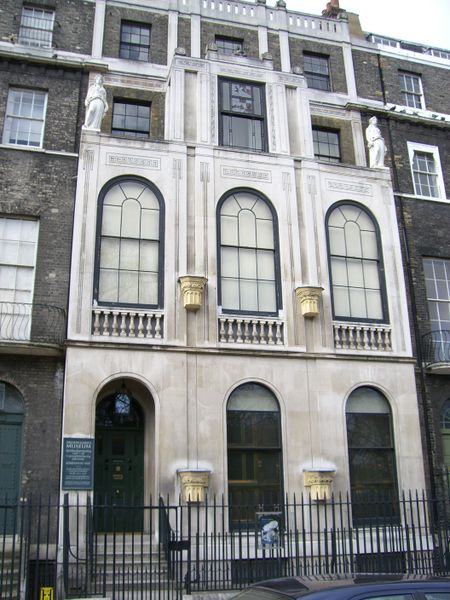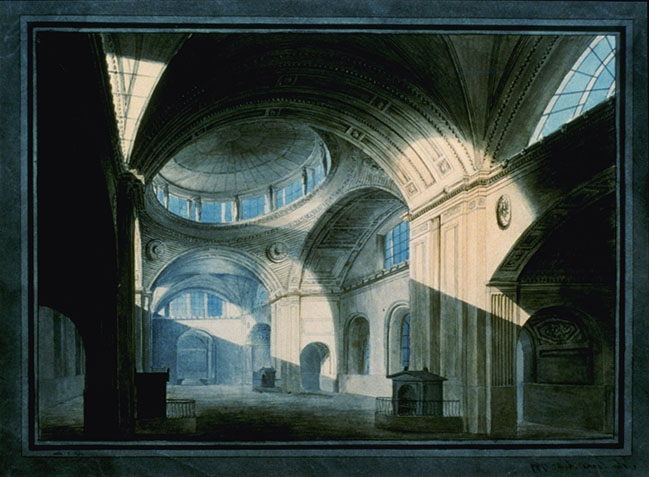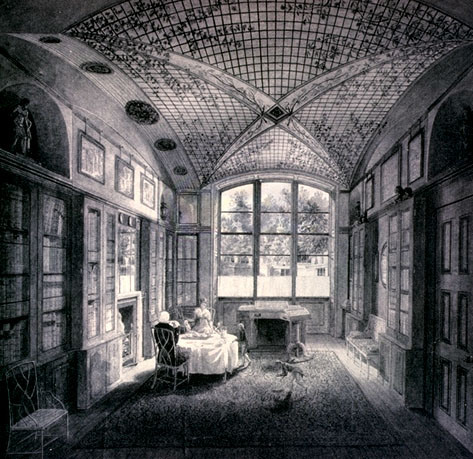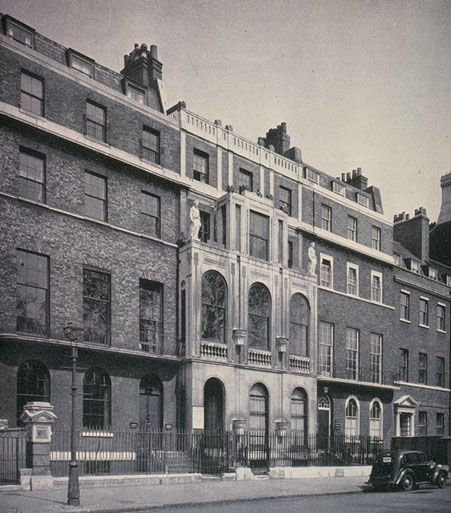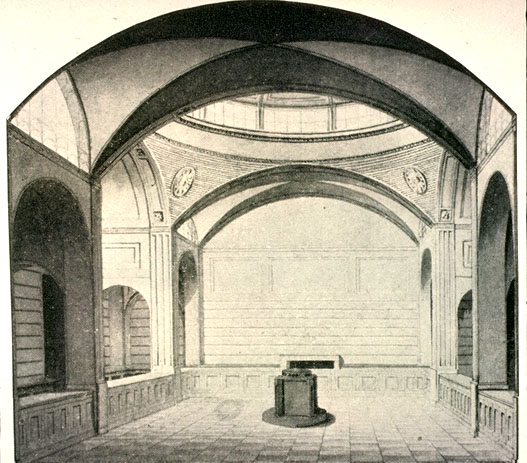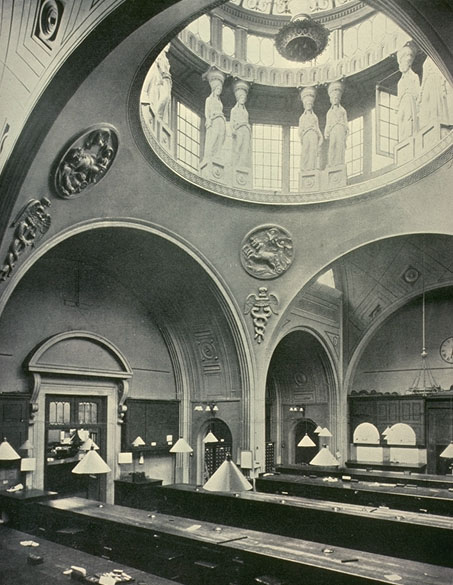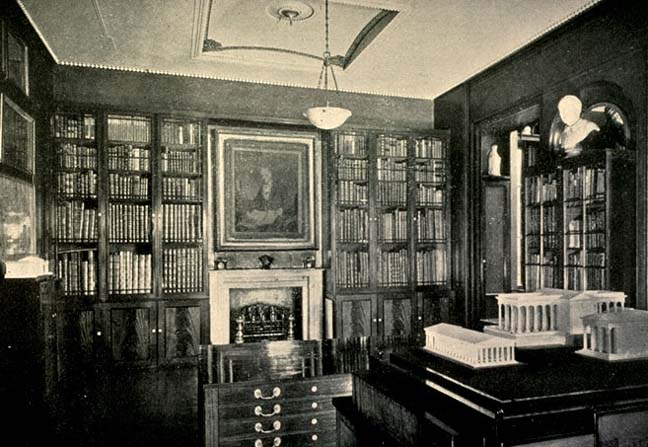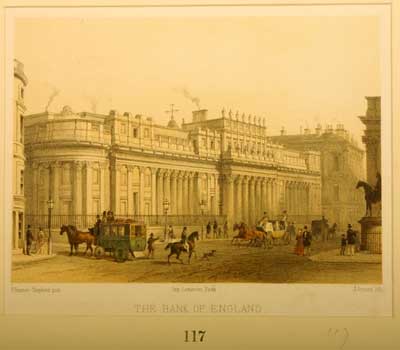<Back to Index>
- Philosopher and Mathematician Charles Sanders Peirce, 1839
- Architect Sir John Soane, 1753
- President of Mexico Nicolás Bravo Rueda, 1786
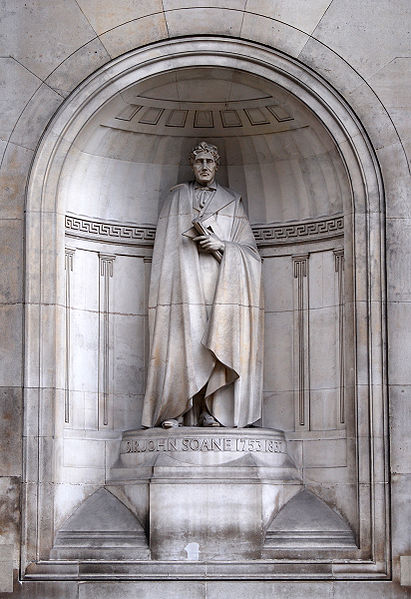
Sir John Soane, RA (10 September 1753 – 20 January 1837) was an English architect who specialised in the Neo-Classical style. His architectural works are distinguished by their clean lines, massing of simple form, decisive detailing, careful proportions and skilful use of light sources. The influence of his work, coming at the end of the Georgian era, was swamped by the revival styles of the 19th century. It was not until the late 19th century that the influence of Sir John's architecture was widely felt. His best-known work was the Bank of England, a building which had widespread effect on commercial architecture.
Soane was born in Goring-on-Thames and educated in nearby Reading, the son of a bricklayer. His name was initially Swan which was first changed to Soan and later to Soane. Soane trained as an architect, first under George Dance the Younger, and then Henry Holland, while also studying at the Royal Academy schools, which he entered in 1771. During his studies at the Royal Academy, he won the Academy's silver medal (1772), gold medal (1776) and finally a travelling scholarship in 1777, which he spent on developing his style in Italy.
When in Rome, Soane travelled around with his old classmate, the architect Thomas Hardwick, and also met the builder and Bishop of Derry, Frederick Augustus Hervey, whom he accompanied to Ireland. However, he failed to find work there, so returned to England in 1780 and settled in East Anglia where he established a small architectural practice.
In 1788, he succeeded Sir Robert Taylor as architect and surveyor to the Bank of England, the exterior of the Bank being his most famous work. Sir Herbert Baker's rebuilding of the Bank, demolishing most of Soane's earlier building was described by Nikolaus Pevsner as "the greatest architectural crime, in the City of London, of the twentieth century". The Bank job, and especially the personal contacts arising from it, increased the success of Soane's practice, and he became Associate Royal Academician (ARA) in 1795, then full Royal Academician (RA) in 1802. He was made Professor of Architecture at the Royal Academy in 1806, a post which he held until his death. Then, in 1814, he was appointed to the Metropolitan Board of Works, where he remained until his retirement in 1832. In 1831, Soane received a knighthood.
Soane was commissioned by the Bank of Ireland to design a new headquarters for the triangular site on Westmoreland Street now occupied by the Westin Hotel. However, when the Irish Parliament was abolished in 1800, the Bank abandoned the project and instead bought the former Parliament Buildings.
During his time in London, Soane ran a lucrative architectural practice, remodelling and designing country homes for the landed gentry. Among Soane's most notable works are the dining rooms of both numbers 10 and 11 Downing Street for the Prime Minister and Chancellor of Britain, the Dulwich Picture Gallery which is the archetype for most modern art galleries, and his country home at Pitzhanger Manor in Ealing.
Soane
died, a widower and estranged from his surviving son (whom he felt had
betrayed him, contributing to his own mother's death), in London in 1837. He is buried in a vault of his own design in the churchyard of St Pancras Old Church. The design of the vault was a direct influence on Giles Gilbert Scott's design for the red telephone box. In 1792, Soane bought a house at 12 Lincoln's Inn Fields, London. He used the house as his home and library, but also entertained potential clients in the drawing room. It is now Sir John Soane's Museum and is open to the public. Between
1794 and 1824, Soane remodelled and extended the house into two
neighbouring properties — partly to experiment with architectural ideas, and partly to house his growing collection of antiquities and architectural salvage. As his practice prospered, Soane was able to collect objects worthy of the British Museum, including the sarcophagus of Seti I, Roman bronzes from Pompeii, several Canalettos and a collection of paintings by Hogarth. In 1833, he obtained an Act of Parliament to bequeath the house and collection to the British Nation to be made into a museum of architecture, now the Sir John Soane's Museum.
